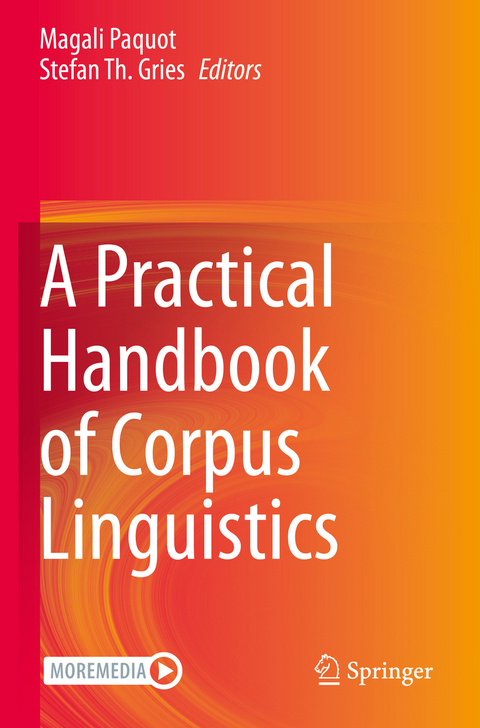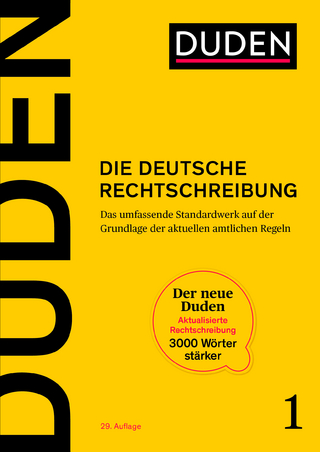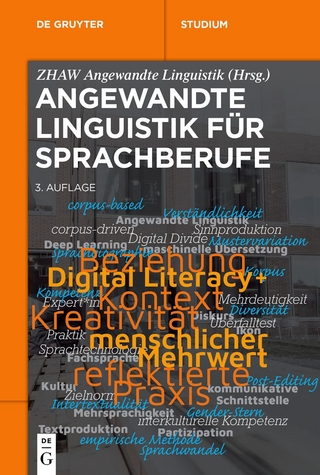
A Practical Handbook of Corpus Linguistics
Springer International Publishing (Verlag)
978-3-030-46218-5 (ISBN)
lt;b>Magali Paquot is a permanent FNRS research associate at the Centre for English Corpus Linguistics, UCLouvain. She is co-editor in chief of the International Journal of Learner Corpus Research and a founding member of the Learner Corpus Research Association.
Stefan Th. Gries is Professor in the Department of Linguistics at the University of California, Santa Barbara (UCSB) and Chair of English Linguistics (Corpus Linguistics with a focus on quantitative methods) at the Justus-Liebig-Universität Giessen (25%). He was a Visiting Chair of the Centre for Corpus Approaches to Social Science at Lancaster University for 5 years, held the Honorary Leibniz Professorship at the University of Leipzig, and was a Visiting Professor at multiple LSA Summer Institutes.
Introduction.- Part I: Corpus design, corpus methods and corpus types.- Chapter 1. Corpus Compilation (Annelie Adel).- Chapter 2. Corpus Annotation (John Newman & Christopher Cox).- Chapter 3. Corpus Architecture (Amir Zeldes).- Chapter 4. Analyzing frequency lists (Don Miller).- Chapter 5. Analyzing dispersion (Stefan Th. Gries).- Chapter 6. Analyzing keyword lists (Paul Rayson & Amanda Potts).- Chapter 7. Analyzing co-occurrence data (Stefan Th. Gries & Phil Durrant).- Chapter 8. Analyzing concordances (Steffi Wulff & Paul Baker).- Chapter 9. Programming for corpus linguistics (Laurence Anthony).- Chapter 10. Diachronic corpora (Kristine Davidse & Henrik de Smet).- Chapter 11. Spoken corpora (Ulrike Gut).- Chapter 12. Parallel corpora (Marie-Aude Lefer).- Chapter 13. Learner corpora (Gaëtanelle Gilquin).- Chapter 14. Child-language corpora (Sabine Stoll & Robert Schikowski).- Chapter 15. Web corpora (Andrew Kehoe).- Chapter 16. Multimodal corpora (Dawn Knight & Svenja Adolphs).- Part II: Quantitative analyses of corpora with R.- Chapter 17. Descriptive statistics and visualization with R (Magali Paquot & Tove Larsson).- Chapter 18. Cluster analysis (Hermann Moisl).- Chapter 19. Multidimensional exploratory approaches (Guillaume Desagulier).- Chapter 20. Classical monofactorial (parametric and non-parametric) tests (Vaclav Brezina).- Chapter 21. Fixed-effects regression modeling (Martin Hilpert & Damian Blasi).- Chapter 22. Mixed-effects regression modeling (Roland Schäfer).- Chapter 23. Generalized additive mixed models (R. Harald Baayen & Maja Linke).- Chapter 24. Bootstrapping techniques (Jesse Egbert & Luke Plonsky).- Chapter 25. Conditional inference trees and random forests (Natalia Levshina).- Part III: Pulling everything together.- Chapter 26. Writing up a corpus linguistic paper (Stefan Th. Gries & Magali Paquot).- Chapter 27. Meta-analyzing corpus linguistic research (Atsushi Mizumoto, Luke Plonsky & Jesse Egbert).- Index.
"It has been a true pleasure to read, especially thanks to its clear and very thoughtfully planned structure and carefully selected representative studies. Very well-edited and well-organised in its comprehensiveness, this handbook constitutes an invaluable resource both for corpus linguists and other researchers who are starting to familiarise themselves with corpora." (Leida Maria Monaco, Corpus Pragmatics, Vol. 6, 2022)
“It has been a true pleasure to read, especially thanks to its clear and very thoughtfully planned structure and carefully selected representative studies. Very well-edited and well-organised in its comprehensiveness, this handbook constitutes an invaluable resource both for corpus linguists and other researchers who are starting to familiarise themselves with corpora.” (Leida Maria Monaco, Corpus Pragmatics, Vol. 6, 2022)
| Erscheinungsdatum | 07.05.2022 |
|---|---|
| Zusatzinfo | XI, 686 p. 206 illus., 46 illus. in color. |
| Verlagsort | Cham |
| Sprache | englisch |
| Maße | 155 x 235 mm |
| Gewicht | 1056 g |
| Themenwelt | Geisteswissenschaften ► Philosophie |
| Geisteswissenschaften ► Sprach- / Literaturwissenschaft ► Sprachwissenschaft | |
| Sozialwissenschaften ► Soziologie ► Empirische Sozialforschung | |
| Schlagworte | child-language corpora • conditional inference trees • Corpus Linguistics • corpus linguistics methods • corpus statistics • diachronic linguistic corpora • Learner corpora • linguistic corpus annotation • linguistic corpus compilation • linguistic corpus design • meta-analysis in corpus linguistics • multimodal corpora • Parallel Corpora • programming for corpus linguistics • quantitative research in linguistics • spoken corpora • statistics with R for corpus linguistics • word frequency lists and counts |
| ISBN-10 | 3-030-46218-8 / 3030462188 |
| ISBN-13 | 978-3-030-46218-5 / 9783030462185 |
| Zustand | Neuware |
| Haben Sie eine Frage zum Produkt? |
aus dem Bereich


